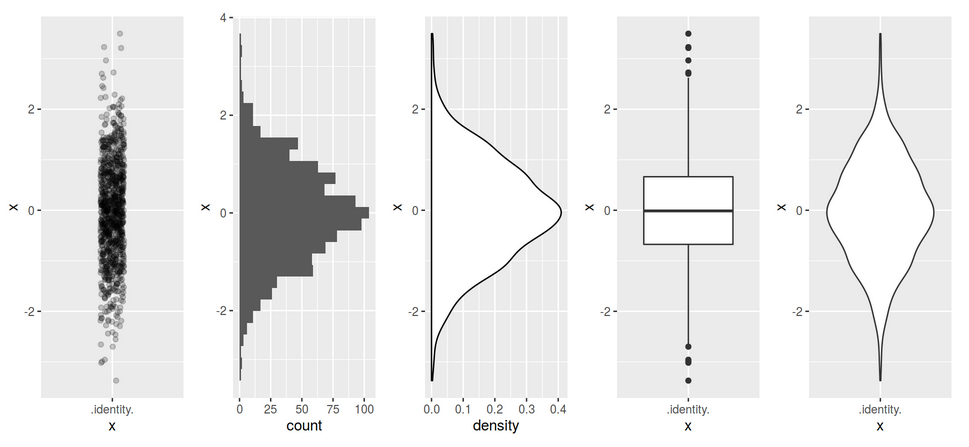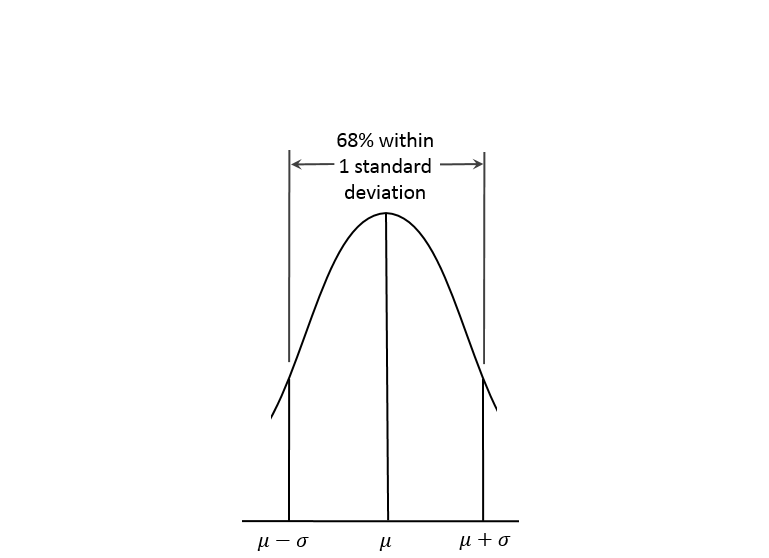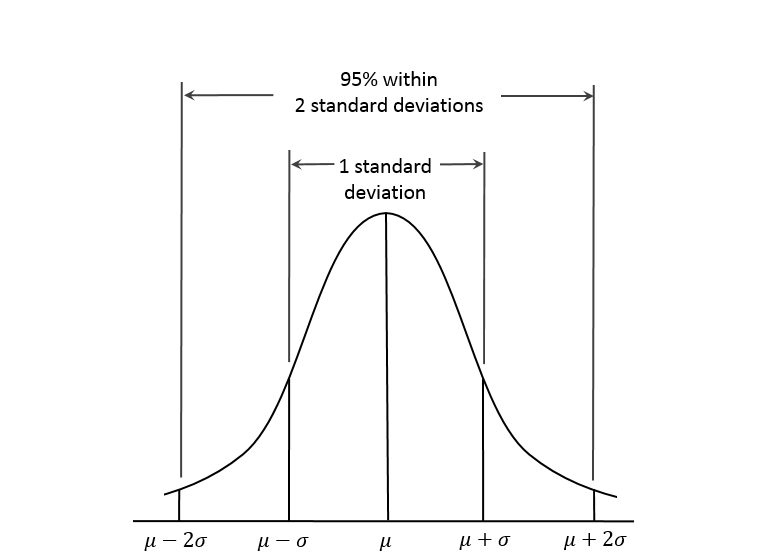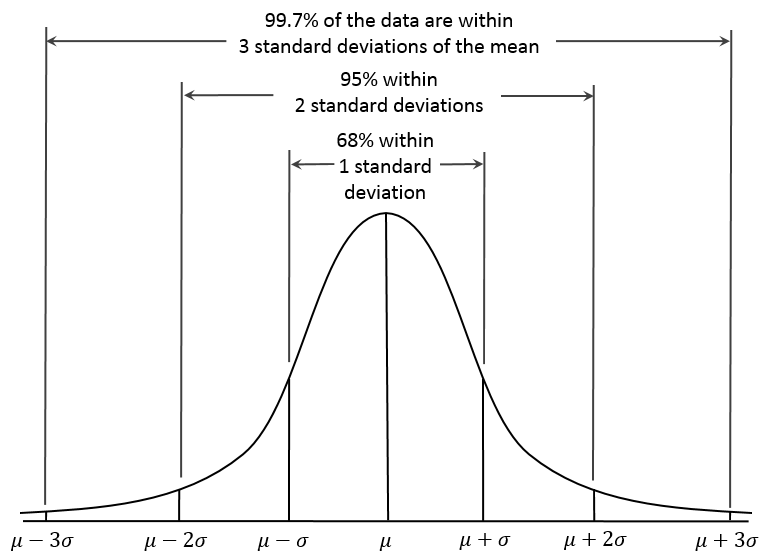Reflection
You know how to do the basics:
- read data into R,
- explore the data set,
- count some statistics,
- create and interpret basic plots,
- describe the plots with labels, change the style, save them.
Normal distribution
bell-shaped curve, Gaussian distribution

Normal distribution
One standard deviation (one sigma)

Normal distribution
Two standard deviations (two sigma)

Normal distribution
Three standard deviations (three sigma)

Is my distribution normal?
Visual aids
- Density plot
- Q-Q plot (quantile-quantile plot)
qqnorm() or ggplot(data) + aes(sample = x) + stat_qq()
Statistical hypothesis test
- Shapiro-Wilk test
shapiro.text()
- Kolmogorov-Smirnov normality test
Q-Q plot
ggplot(dartpoints) + aes(x = Length) + geom_density()
ggplot(dartpoints) + aes(x = Thickness) + geom_density()
ggplot(dartpoints) + aes(sample = Length) + stat_qq()
ggplot(dartpoints) + aes(sample = Thickness) + stat_qq()
Shapiro-Wilk normality test
\(H_0\) (null hypothesis): Values fit normal distribution.
\(H_A\) (alternative hypothesis): Values do not fit normal distribution.
p-value: probability of the event that observed values fit normal distribution
p > 0.05: Fail to reject null hypothesis.
Significance level = 0.05 – Event occurs in less than 5% of cases
shapiro.test(dartpoints$Length)
Shapiro-Wilk normality test
data: dartpoints$Length
W = 0.90277, p-value = 4.852e-06
shapiro.test(dartpoints$Thickness)
Shapiro-Wilk normality test
data: dartpoints$Thickness
W = 0.98623, p-value = 0.4559
Other shapes of distributions






